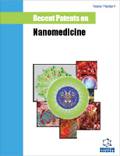Abstract
The applications for ocular implants are as broad as the pathology of eye. The success of treating ophthalmologic disease will be enhanced by targeted and sustained drug delivery. The eye is a privileged site and has several mechanisms that protect it from the external environment. This same machinery that guards the eye, also hinders drug delivery. Recent advances in ocular implants are adapting these devices for the treatment eye diseases ranging from glaucoma to diabetic retinopathy. Advances in biodegradable polymers enable ocular implant to have dual mode drug release profiles to simultaneously deliver a loading dose and maintenance dose. We explore patents that adapt traditional medications to these advanced drug delivery systems for the continuous treatment of glaucoma and potentially promising therapies for the sustained delivery of small RNA interfering molecules to block gene expression in the eye. We also examine several issued patents and follow the preliminary findings in clinical trials. Together, these inventions mark the frontier of novel drug delivery systems and present a promising mode to adapt current therapies to new delivery systems for the treatment of chronic ocular disease.
Keywords: AMD, bioerodible polymer, drug delivery, excipient, PLGA, Posterior segment, pharmacologic delivery, retina, siRNA, small RNA, RNAi, ophthalmology, conjunctivitis, immunosuppressive drugs, age-related macular degeneration, Tissue engineering, Ocular drug delivery device, Ocular Hypertension
 6
6

